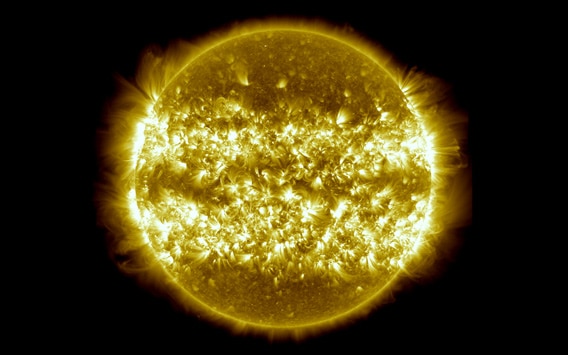Create a free profile to get unlimited access to exclusive videos, sweepstakes, and more!
Three Years of the Sun in Three Minutes

NASAâs Solar Dynamics Observatory (SDO) was launched into space in February 2010. Since that time itâs been staring at the Sun unblinkingly, taking vast amounts of data on our nearest star and sending it back to Earth.
Scott Wiessinger, at NASAâs Goddard Space Flight Center, was looking at some footage of SDO observations and realized how fascinating it was to simply watch the Sun rotate over long ranges of time. So he created this stunning video showing three years of SDO observations compressed into three minutes (a factor of over a half-million in speed!):
[Make sure to set the resolution to hi-def and make it full screen.]
The video shows the Sun in the extreme ultraviolet, where magnetic activity is easily seen. As the Sun spins, you can see sunspots connected by towering magnetic field lines move across the Sunâs face. The Sun rotates about once every 25 days, to give you a sense of scale here.
I noticed that over the course of the video the amount of activity increases, which didnât surprise me: Three years ago the Sun was just starting to ramp up toward the expected peak of its 11 year cycle. This particular cycle has been weird; it was long delayed after the end of the last one, grew slowly, and has tapered off recently for reasons unknown. Itâs not clear if weâll see the Sun coming back to life or not over the next year. Itâs a fiendishly complex system, so weâll just have to wait and see what it does.
There are several events that happen over the course of the video if you have a sharp eye, including a big flare, two partial eclipses by the Moon, and the great Venus Transit of 2012. A list of timings of those events in the video is on the YouTube page. The GSFC multimedia page has the video in high-res formats, including the full versions showing the Sun in different wavelengths of light seen in the latter part of the video above.
It's mesmerizing to see the Sun this way, as well as in all the other colors as well. And they all have something to tell us about how the Sun behaves. Given it's the primary source of essentially all the light and heat on Earth, studying it as closely as possibles is a Really Good Idea.














